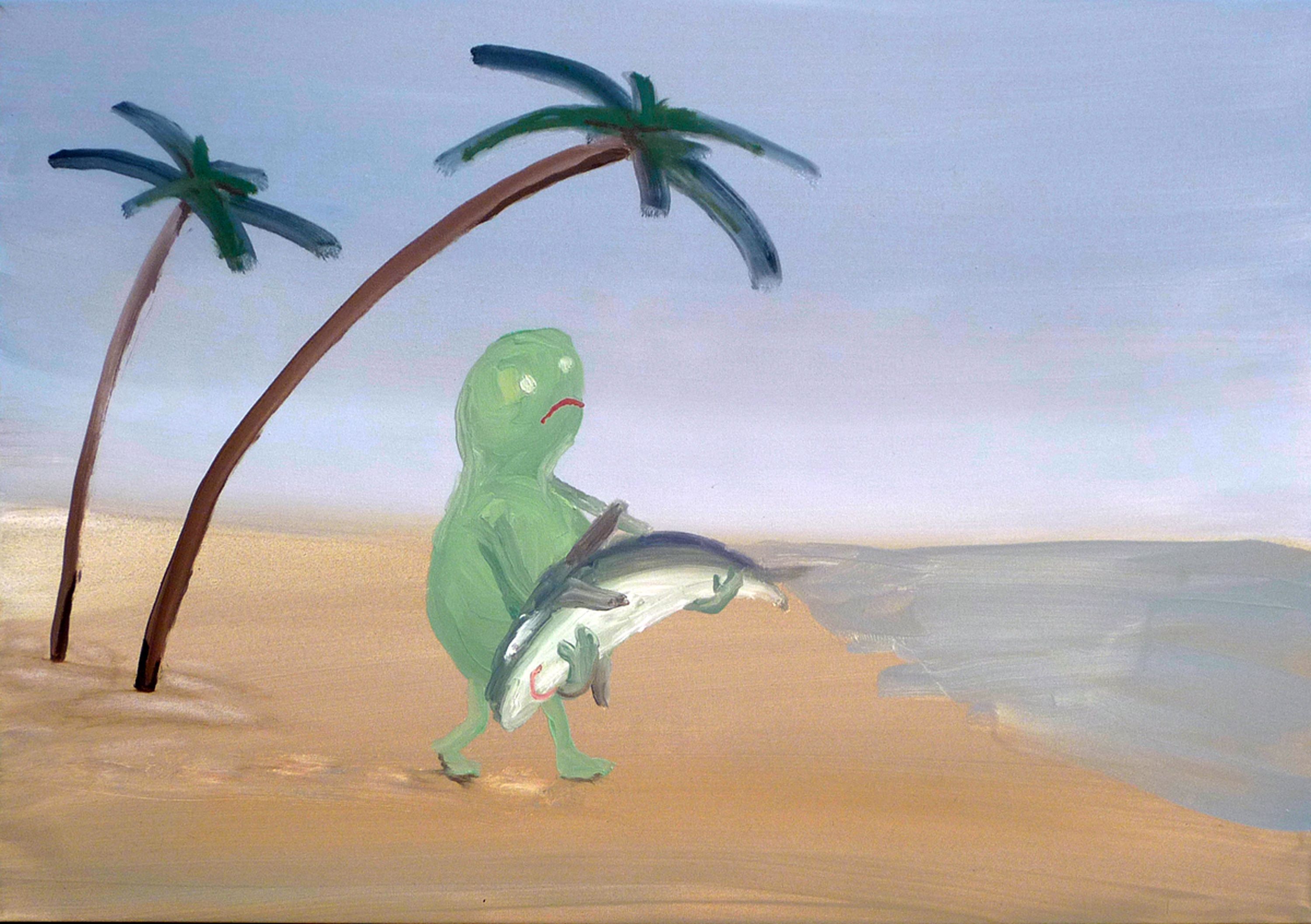Here and beyond the Glass Mountain
| Venue: | acb Gallery |
| Date: | Sep 10 – Oct 15, 2010 |
Description
The season-opening exhibition Here and beyond the Glass Mountain features Hungarian contemporary painters who are drawn to the narrative plane of peculiar visual representations. Having embraced the technical tradition of painting, these artists translate it to their own language and apply it in a re-interpretive manner, infusing their rich visual compositions with humour and irony. Reality is a mere tool in their hands, which allows them to bring to the fore structures that are capable of conveying the experience of another, possible reality. As a common element, through creating non-consensus worlds, they each give their personally mythologised explanation of their experienced realities, which, in their narrative paintings, take on a surreal and dreamlike character.
László Karácsonyi’s paintings tend in two main directions: they culminate in the hyperrealism of his technical experimentations, while often also featuring elements of knighthood iconography and a contemporary take on icon painting.
Csaba Kis Róka takes traditional pastoral landscapes as his point of departure, which he fills with unique visions of violence. His morbid, classicist, inherently perplexing images are made all the more provocative by humour and irony.
Gábor Király’s works, which depict the lonely human, is characterised by bright colours as well as intense and loosely handled brushstrokes. He returns to his childhood and, using snapshots from the family album, constructs his personal mythology. János Kósa examines the coherent narratives of that feeling which remains in the wake of personally experienced history: nostalgia. Gábor Roskó is a “fable-painter” of banal situations in everyday life – an archaeologist peering at the present from the future. Aside from his unusually historic style of painting, what makes Gábor Szenteleki’s work really interesting – and would indeed be difficult to not notice – is the perplexing strangeness of the images, their grotesque figures and improbable situations. Levente Szűcs’s figures, which stand outside space and time, give the impression of last survivors before they too disappear in the final apocalypse that is ravaging the hastily finished, glazy landscape.
Contrary to many hypotheses, figurative painting has never truly disappeared; it has merely moved outside the focus of attention. Thanks to increasing popularity among artists, curators, critics and collectors by the millennium, figural painting has managed to declare its attention-seizing nature; it is more alive than ever.

